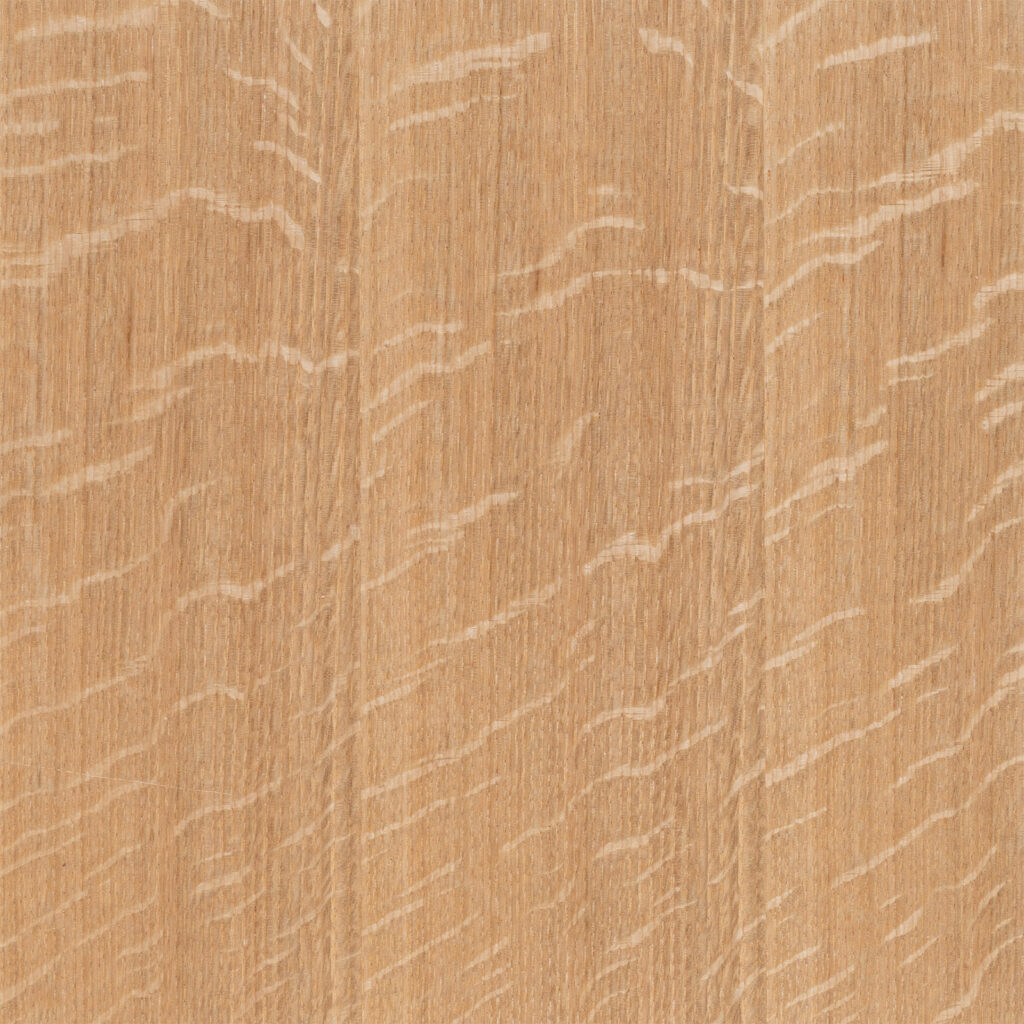What is White Oak?
White oak is a hardwood native to North America and can be found from northern Florida to northern Ontario. It is a long-lived tree and has been found to live to 450 years. The oldest recorded white oak tree is estimated to be over 600 years old. White oak trees grow very tall due to their extreme life span and their massive, broad tops display large branches that splay out in wide angles.
White Oak is our choice for this week’s Wood of the Week.
One unique characteristic of white oak is the “tylose”, or an outgrowth on the cells of the heartwood. When the tree is stressed, injured, or sick, these tyloses drop from the cells and form a dam in the vascular tissue of the tree to prevent further damage. This is especially important because these dams, formed by the tyloses, make this hardwood extremely hardy, water resistant, and rot resistant. It is so rot resistant that it is the wood used in wine and whiskey barrels and was even used in the construction of the USS Constitution.

White oak heartwood is a light to medium brown color and will sometimes take on an olive color. The sapwood is a lighter shade of brown, but it is not always drastically different. The grain is straight and has a coarse, uneven texture. Quarter-sawn white oak shows distinct fleck patterns.

White oak is much more resistant to rot than red oak is, and is suitable for water-holding applications, boatbuilding, outdoor furniture, etc. Red oak should only be used for interior pieces such as cabinets, indoor furniture, flooring, etc. White oak tends to be more dense, while red oak is a bit lighter and has a more porous and open grain.
Why Choose White Oak For Custom Woodworking?
White Oak is valued for its durability, strength, and resilience. Because it is so rot resistant, it does not need to be treated with harsh chemicals like other woods do. It is also an abundant wood that renews itself easily. It is currently being reforested to the extent that there are more white oak trees now than there were 100 years ago.

The reforestation efforts, abundance, durability, and aesthetic appeal makes this wood a top choice for furniture, flooring, millwork, cabinetry, and paneling.
Due to its relative abundance, white oak is not quite as expensive as other hardwoods. Though it used to be primarily a workhorse wood, used in ships, barrels, and railroad tracks, white oak has become a prized and sought after wood for furniture and cabinetry. In addition, it also makes for a gorgeous veneer.
White Oak in Woodworking

White oak machines well, but because it is hard, it may be more difficult to work with hand tools – machines with carbide knives work great. It responds well to steam bending and also glues well. It is a good idea to pre-bore holes when using screws.
White oak stains well and finishes beautifully. Using progressively finer grits of sandpaper, white oak sands well when using a block or pad. If sanding without a block or pad, there is a risk of removing more of the softer wood than the harder wood, resulting in unintended ridges.
Like the look? Contact us to get started on a custom woodworking project of your own using White Oak.